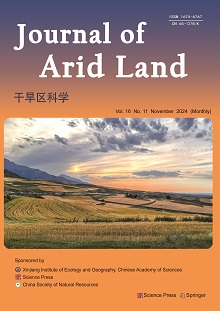Wolfberry (Lycium barbarum L.) is important for health care and ecological protection. However, it faces problems of low productivity and resource utilization during planting. Exploring reasonable models for water and nitrogen management is important for solving these problems. Based on field trials in 2021 and 2022, this study analyzed the effects of controlling soil water and nitrogen application levels on wolfberry height, stem diameter, crown width, yield, and water (WUE) and nitrogen use efficiency (NUE). The upper and lower limits of soil water were controlled by the percentage of soil water content to field water capacity (θf), and four water levels, i.e., adequate irrigation (W0, 75%-85% θf), mild water deficit (W1, 65%-75% θf), moderate water deficit (W2, 55%-65% θf), and severe water deficit (W3, 45%-55% θf) were used, and three nitrogen application levels, i.e., no nitrogen (N0, 0 kg/hm2), low nitrogen (N1, 150 kg/hm2), medium nitrogen (N2, 300 kg/hm2), and high nitrogen (N3, 450 kg/hm2) were implied. The results showed that irrigation and nitrogen application significantly affected plant height, stem diameter, and crown width of wolfberry at different growth stages (P<0.01), and their maximum values were observed in W1N2, W0N2, and W1N3 treatments. Dry weight per plant and yield of wolfberry first increased and then decreased with increasing nitrogen application under the same water treatment. Dry weight per hundred grains and dry weight percentage increased with increasing nitrogen application under W0 treatment. However, under other water treatments, the values first increased and then decreased with increasing nitrogen application. Yield and its component of wolfberry first increased and then decreased as water deficit increased under the same nitrogen treatment. Irrigation water use efficiency (IWUE, 8.46 kg/(hm2·mm)), WUE (6.83 kg/(hm2·mm)), partial factor productivity of nitrogen (PFPN, 2.56 kg/kg), and NUE (14.29 kg/kg) reached their highest values in W2N2, W1N2, W1N2, and W1N1 treatments. Results of principal component analysis (PCA) showed that yield, WUE, and NUE were better in W1N2 treatment, making it a suitable water and nitrogen management mode for the irrigation area of the Yellow River in the Gansu Province, China and similar planting areas.
 IF(JCR): 2.7 (Q3)
IF(JCR): 2.7 (Q3)